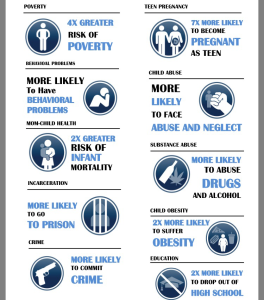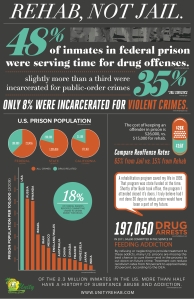According to the U.S. Census Bureau, one out of three American children live without their biological dad in the home. Consequently, there is a “father factor” in nearly all of the societal issues facing America today. We must realize there is a father absence crisis in America that is due to the injustice of drug related sentencing.
Youths in father-absent households still have significantly higher odds of incarceration than those in mother-father families. Youths who never had a father in the household experienced the highest odds! A 2002 Department of Justice survey of 7,000 inmates revealed that 39% of jail inmates lived in mother-only households. Approximately 46% of jail inmates in 2002 had a previously incarcerated family member. One-fifth experienced a father in prison or jail. What Americans needs to acknowledge is that “our” children are the future; and how we raise them is going to play a key role in the way our society will progress. Children of incarcerated parents are more likely to drop out of school, join in delinquency, and subsequently be incarcerated themselves.
- Official U.S. data shows that 63 percent of youth suicides (5 times the average), 70 percent of youths in state-operated institutions (9 times the average) and 85 percent of children with behavioral disorders (20 times the average) are from fatherless homes.
- Studies on parent-child relationships and child wellbeing show that father love is an important factor in predicting the social, emotional, and cognitive development and functioning of children and young adults.
- Daughters of single parents without a Father involved are 53% more likely to marry as teenagers, 711% more likely to have children as teenagers, 164% more likely to have a pre-marital birth and 92% more likely to get divorced themselves.
Our legislative system is creating generational problems for our society and the future of our nation. These children who are being raised with a parent incarcerated are not as stable as those who live in a two-parent household. These children need stability and need to have a healthy relationship with their parents, especially those incarcerated.
Knowing this we need to develop an alternative punishment for non-violent drug offenses. Such as reducing sentences for incarcerated people who participate in rehabilitation programs, expanding sealing and expungement criteria for some juvinelle offenses, and providing the possibility of parole for some offenses committed while a juvinelle.
Our legislation needs to be stronger and it should eliminate unfair mandatory minimums altogether. Our legislation should do more to eliminate punitive incarceration for children and opt instead for community-based rehabilitation. Our legislation is barely scratching the surface of what needs to be done, and there is much more to do.
Sources:





